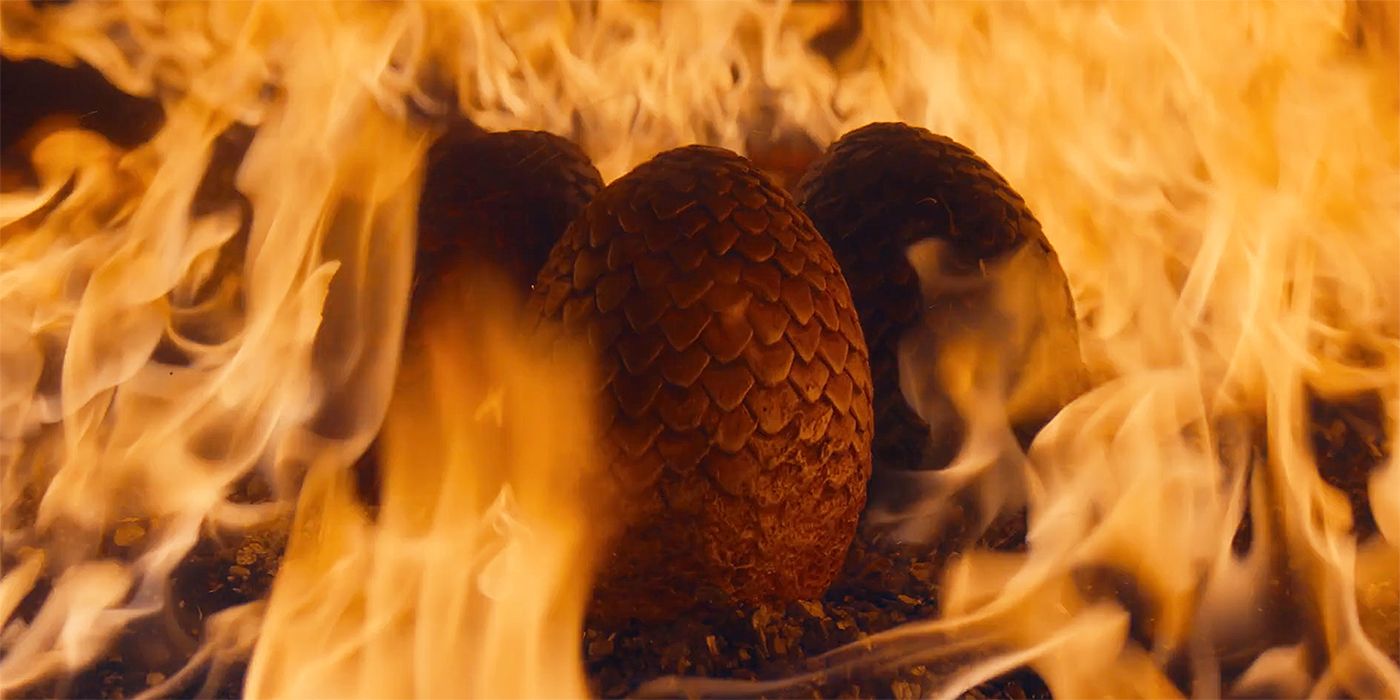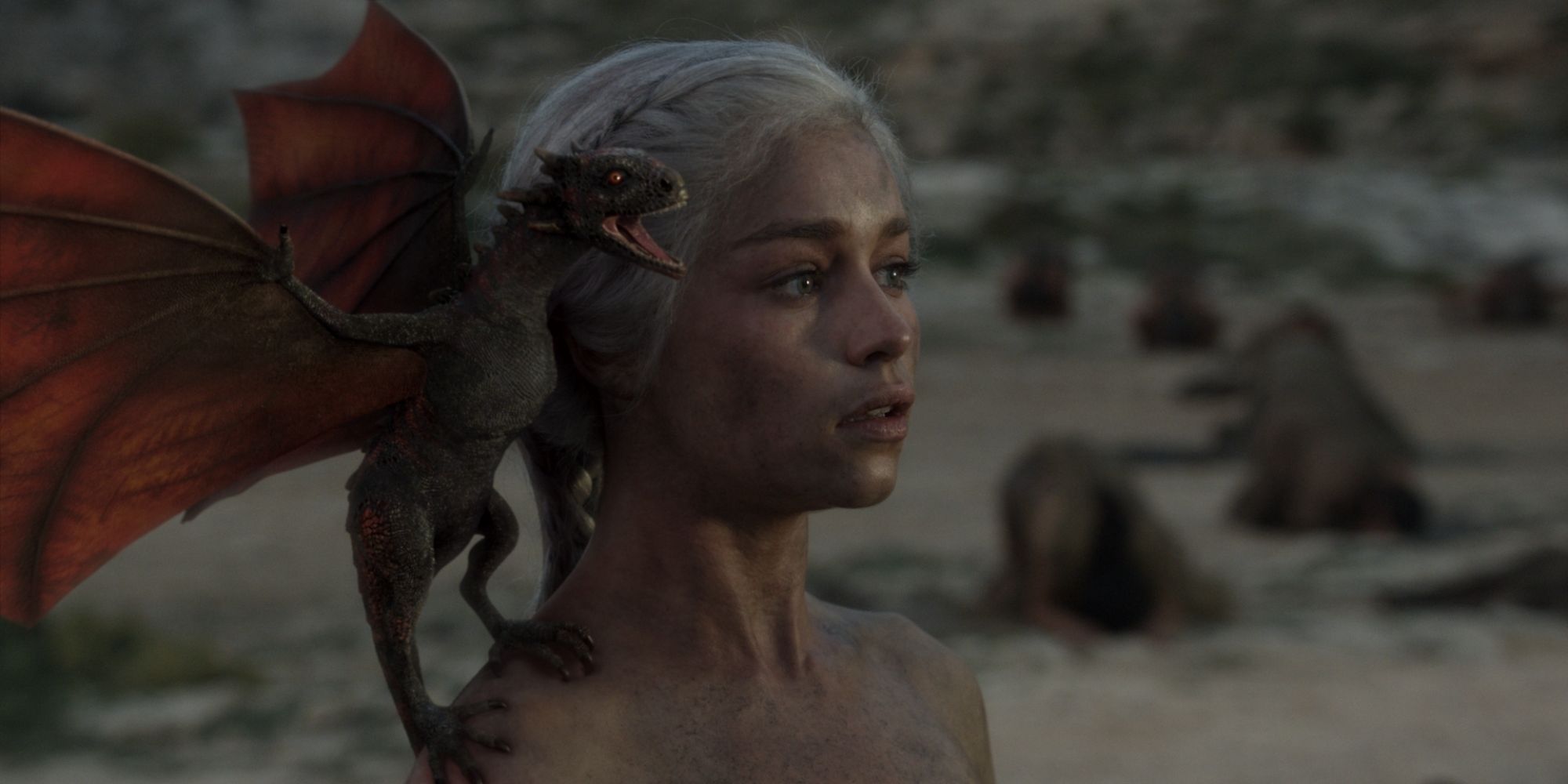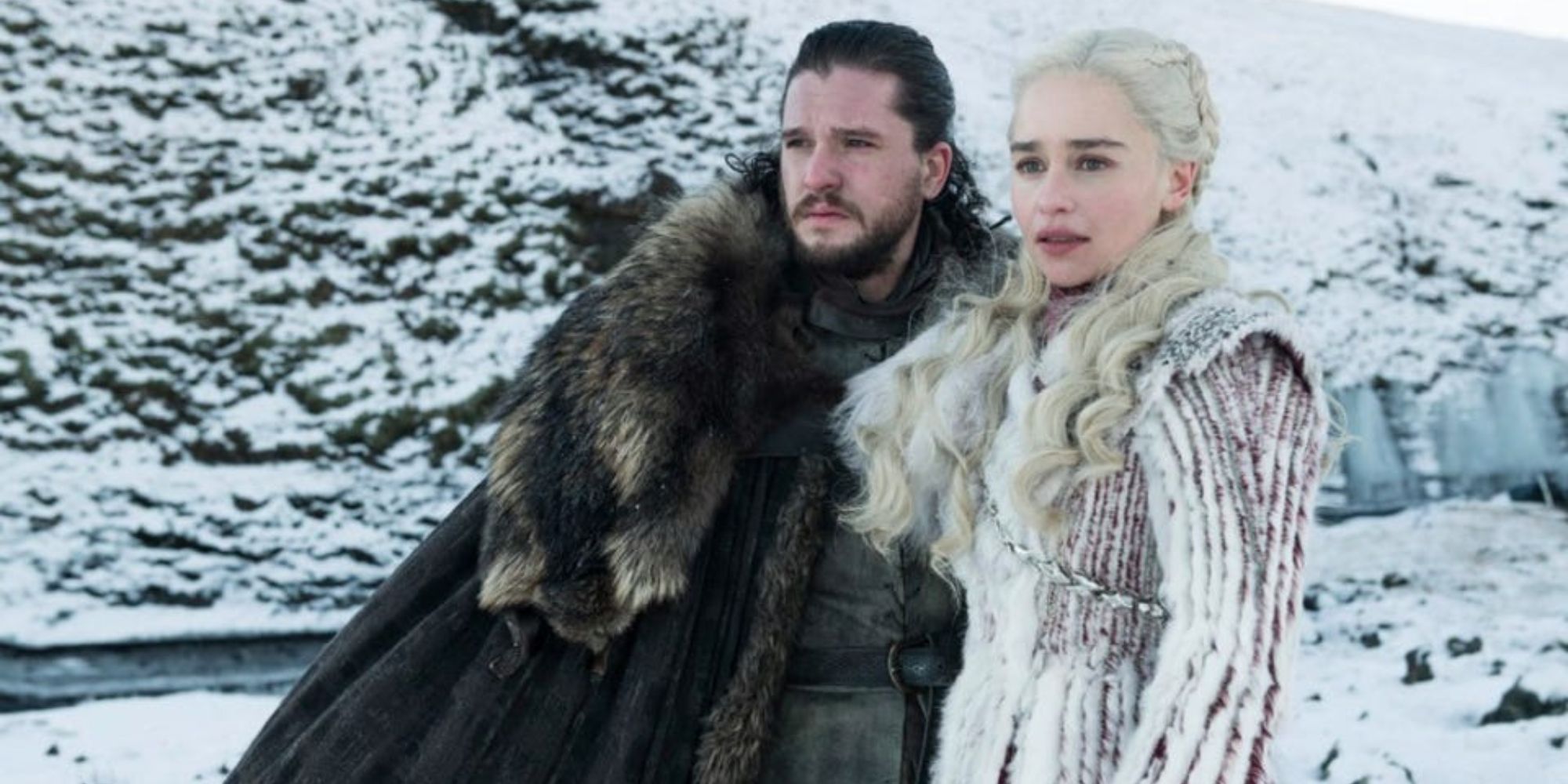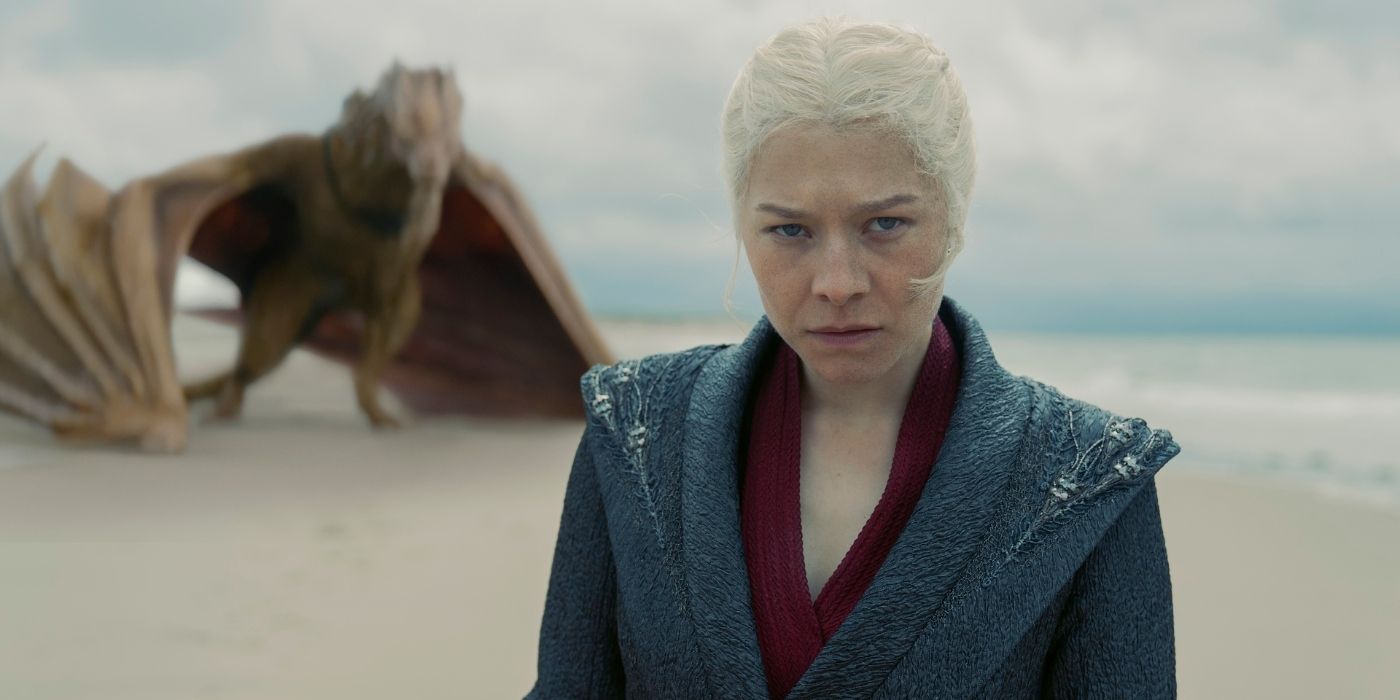
At the beginning of A Storm of Swords, George R.R. Martin dedicates the novel to Phyllis Eisenstein, a fantasy writer who convinced him to include dragons in his A Song of Ice and Fire books — and in truth, it’s hard to imagine what Game of Thrones would look like without dragons. Last year, Martin told Kevin Smith that he originally considered making Targaryens pyromancers, with the ability to wield fire. Fast-forward to 2024, and House of the Dragon Season 2 now features 15 different dragons, each with unique designs and personalities. These magical beasts have been a trope of fantasy fiction since the conception of the genre, but Martin uses them very carefully — and there seem to be strict rules in the Song of Ice and Fire universe about which characters can actually ride dragons.
House Targaryen Has Always Followed Specific Rules for Dragonriders
There is a distinct difference between House of the Dragon and Game of Thrones regarding Targaryen dragonriders. Martin established a strict set of rules for Westeros’s most powerful house — a rider can only control one dragon, no more, no less. That said, Daenerys Targaryen (Emilia Clarke) seems to be an exception. Throughout history, Targaryens often tamed dragons by confronting them, like Aemond (Ewan Mitchell) did with Vhagar, or placed dragon eggs in the cradles of newborn babies, allowing for an instant bond with their intended rider the moment they hatched. Daenerys poses an interesting case, given that her dragon eggs are hundreds of years old, supposedly fossilized, but when she walks into the burning funeral pyre at the end of Season 1, she emerges with three newborn dragons. As a result, Daenerys shares a maternal bond with three dragons, rather than just one. However, they arrive with the caveat that Daenerys can no longer give birth to a human child, an unprecedented situation unlike any other Targaryen in history.
Can Daenerys Control All Three of Her Dragons in ‘Game of Thrones’?
While Daenerys is undeniably a mother to Drogon, Rhaegal, and Viserion, there is a common misconception that she can ride and control all three. Martin’s rules are unwavering, and even Daenerys isn’t an exception to the concept of one rider per dragon. Season 6 proves Drogon is Daenerys’ dragon when she takes flight from Mereen. By the end of Game of Thrones, both Rhaegal and Viserion find new riders in Jon Snow and the Night King, but things are a little more complicated in the Song of Ice and Fire book series, where Daenerys must learn more about Valyrian magic before she can fully control her dragon. Drogon is a unique dragon, said to be the reincarnation of Balerion the Black Dread, the fiercest and largest dragon ridden by Aegon the Conqueror. Despite the variety of dragons seen in House of the Dragon, none ever come close to resembling Balerion until Drogon. Drogon adds a symbolic significance to Daenerys, as she has not only brought dragons back into the world but supposedly given birth to a dragon that rivals the ultimate symbol of Targaryen dominance in Westeros.
The Targaryens in House of the Dragon face the opposite problem. While characters like Daemon and Rhaenys (Eve Best) display a great degree of control over their dragons, none ever grow to the same size as Balerion. Vhagar is the only dragon that comes close, and despite being nearly as old as Balerion, she is still somewhat smaller. Daemon has expert knowledge of Old Valyria, the civilization that gave birth to dragons, and this undoubtedly plays a role in his ability to control Caraxes. Another big difference between the two series is that while dragons wear saddles and dwell in Dragonstone’s caverns in House of the Dragon, Daenerys’ dragons feature no such equipment and prefer to roam wild until she eventually locks them underneath the Great Pyramid in Mereen. The fact that Daenerys doesn’t require a saddle to ride her dragon could be due to her affinity for Dothraki culture, given the horselords roam the wilderness and ride horses with no saddles.
Daenerys’ Dragons Grow a Lot Quicker in ‘Game of Thrones’
Next to House of the Dragon, Daenerys’ dragons grow a lot quicker than any of her ancestors’. Rhaenyra’s (Emma D’Arcy) dragon, Syrax, is over thirty years old, while Caraxes is roughly seventy during House of the Dragon Season 2. Despite their age, neither matches Drogon in size. Fans often attribute this as a plot hole in the story, but several explanations can account for this. In the Song of Ice and Fire book series, Drogon, Rhaegal, and Viserion are relatively smaller than their onscreen counterparts, but are expected to grow bigger before Daenerys invades Westeros. Martin originally planned a five-year time jump in his original novels, which would have given Drogon, Rhaegal, and Viserion ample time to develop into fully-grown dragons. He eventually decided against the time-skip, meaning the dragons would have to develop quicker to be effective assets to Daenerys.
Aside from a literary standpoint, there is an in-world explanation for the size disparity. Game of Thrones is set during a time when magic is returning to the world, partly indicated by the striking red comet seen in Season 2. Both dragons and White Walkers return to Westeros, and Greenseers like Bran (Isaac Hempstead-Wright) unlock new magical abilities. Daenerys’ dragons also seem to grow quicker because a new age of magic has come to Westeros. By contrast, House of the Dragon is set in a time when magic has almost completely died out. As a Dragonkeeper tells Rhaenyra in Season 2, Episode 7, “The dragons are sacred, they are the last magic of Old Valyria in this sad world.” Magic, which seems to have a direct correlation to Old Valyria, undoubtedly affects dragons as well.
Most of Daenerys’ dragons meet an unfortunate end in Game of Thrones, but the books will likely play out differently. Rhaegal and Viserion may have completely different riders, given there are more Targaryens alive there than in the show. One thing is for certain: Daenerys is a unique Targaryen who shares a special bond with her dragons, something Daemon (Matt Smith) discovered during his prophetic vision in the Season 2 finale. While her fate onscreen disappointed viewers, the books will hopefully deliver a satisfying conclusion to her story and answer more of the many questions surrounding dragons.





